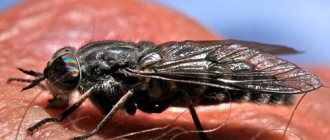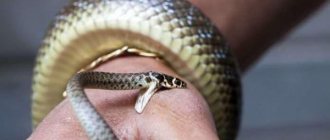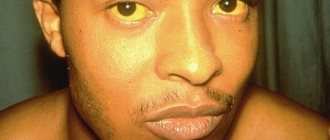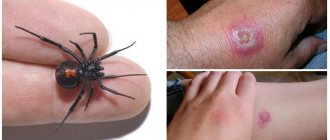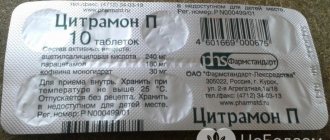Mosquitoes, according to archaeologists, have existed for approximately 170-180 million years since the Jurassic period and probably originally sucked the blood of dinosaurs. As you know, previously there was more oxygen on Earth, and all living creatures were noticeably larger than today, including insects. Who would have thought that in those days mosquitoes with a body length of more than five centimeters could fly! However, even now mosquitoes with a body length of 1.5 centimeters or more are not uncommon. I wonder how long a mosquito lives after biting a person? Science now knows more than 3,000 species of mosquitoes; people have always paid attention to them, and they were first described by the scientist Carl Lineus in the 18th century.
Briefly about mosquitoes
There are several types of itchy insects.
Moreover, individuals have common characteristics. Firstly, these are dipterous insects. Secondly, they are blood suckers. The question arises: who bites - a male or a female? In many species, ectoparasitism is practiced by females. They are forced to feed on blood to produce eggs. Blood-sucking mosquitoes usually survive on warm-blooded vertebrates, but some species are willing to feed on the blood of reptiles. The weight of a mosquito does not exceed 5 mg. However, some tropical varieties reach impressive sizes and have enviable weight. The weight of a mosquito in the middle zone ranges from 1-3 mg. The male mosquito is slightly larger and has long antennae, and its life expectancy is several times less than that of the female. The mosquito's proboscis has an interesting structure - there are 6 needles on one rod. A mosquito does not die after being bitten, like a bee, for example, because its proboscis is not a stinger. This is a mouthpart with a sucking tube, which is the same regardless of the type of mosquito.
The following types of mosquitoes are known in Russia:
- squeak - aka ordinary. Widely distributed in the south of Russia, found in other cities and countries. The female mosquito actively searches for prey and lays a huge number of eggs during the season. Moreover, its life expectancy is 43 days. How long a male mosquito lives depends on the temperature. Usually up to 20 days. Some varieties are resistant to low temperatures and do well in northern regions. Such individuals are known as Siberian mosquitoes,
- Anopheles is a malaria mosquito, which has 10 species in Russia alone. In other countries, malaria mosquitoes are larger in size and more numerous. However, a large mosquito is not always Anopheles. Karamors or centipedes look similar to anapheles, but are completely safe for humans,
- The bell mosquito got its name because of the characteristic sound it makes when flying. Also known as mosquitoes and chironomidae mosquitoes. Common types of mosquitoes with different external characteristics. In nature, green mosquitoes and golden-beige individuals are found. How much does such a mosquito weigh? About 1 mg. This variety is notable for its modest size.
If you come across a blue mosquito or a black dipteran, then with a high degree of probability it is an ordinary individual. Urban varieties vary in color. They are also called swamp and basement mosquitoes.
Among all types of mosquitoes, malarial ones are the most dangerous. Not every mosquito from the tropics is a potential threat, but southern varieties are more likely to carry dangerous diseases. Due to the warm and humid climate, the risk of infections spreading in nature is higher.
How many times one mosquito can bite depends on the degree of satiety. If the female is not disturbed, she will get enough in one go. In this case, the mosquito drinks the amount of blood that allows it to compensate for the protein deficiency, but not more than 5 mg.
A mosquito is an insect that secretes anticoagulants when it bites. Along with them, various infections enter the bloodstream. Thus, the mosquito is considered a carrier of dengue, parasitic and viral diseases.
Scorpion sting
Is it possible to become infected with HIV from a mosquito bite, since this terrible disease is transmitted through blood? Fortunately, you cannot get AIDS or viral hepatitis from a mosquito bite. This is due to the fact that during blood sucking, the blood of the previous victim does not reach another donor, and cases of transmission of HIV or hepatitis B have not been recorded. However, from a mosquito bite you can get sick with pendinka (Vorovsky's disease), tularemia, filariasis - the parasites get into the piercing proboscis and are released when the skin is punctured.
Knowing how a mosquito hunts and bites can help prevent its attack. Despite the fact that infection by immunodeficiency is excluded, there remains a high risk of infection with malaria, dengue fever, yellow fever and other diseases that kill people.
Why does a mosquito squeak while flying?
More often than not, the problem is not the bite itself, but the annoying sound that precedes the insect's attack. Why do mosquitoes squeak when they bite? The squeak of an insect is a sound made by thin wings. The mosquito squeaks mainly in flight. Moreover, the nature of the sound varies. Dipterologists (diptera experts) are confident that insects use squeaks to communicate with each other and give danger signals.
Who do they prefer to bite more often?
Why don't mosquitoes bite everyone? Mosquitoes bite almost everyone. However, you probably noticed that the mosquitoes that flew into the room bit the child more strongly, while others were hardly touched. There is an explanation for this. Children's skin is delicate and thin, so it is easier to bite through it, the capillaries are located closer to the surface, and the metabolism is faster than that of an adult. Therefore, the child is an easy prey.
Female mosquitoes are attracted to the smell of lactic acid from human sweat and exhaled carbon dioxide. They like the smell of steroids, cholesterol and nonanal. This occurs in obese people and patients with cardiovascular diseases. Another preference is for those who have high testosterone or estrogen levels. Strong men and pregnant women are at risk for bites.
You may notice that a mosquito bites a child most readily; this is not surprising: children’s skin is thinner than that of an adult, and the capillaries are closer to the surface
Bloodsuckers react to warm-blooded creatures, so they choose people who are hotter to the touch. This may be why people with malaria are bitten more often by mosquitoes.
Insects do not like the smell coming from people taking cholesterol-lowering medications. In some cases, mosquitoes are attracted to the scent of face and hand cream, hair balm or aftershave.
Rash in the form of mosquito bites: photos, possible diseases, treatment
The appearance of small blisters on the skin, especially multiple and itchy ones, can cause serious concern. Outwardly, they resemble a rash in the form of mosquito bites.
If one is discovered, the first step is to establish whether it could actually be the result of an insect attack. A mosquito bite can be confused with a bug or flea bite.
If contact with any of the listed insects is impossible, the reason may be as follows:
But in most cases, a rash of this kind is still allergic in nature. To cope with it, it is necessary to establish which particular substance provoked this reaction. But first of all, it is necessary to exclude the slightest possibility of error in determining the diagnosis. Therefore, self-diagnosis is completely insufficient here.
The mechanism of allergic urticaria
Urticaria, expressed as a rash in the form of mosquito bites, usually occurs within the first hours after a negative impact.
Therefore, we can make an assumption about what exactly caused this reaction. It should be noted that the effect can be directed either directly to the skin or to the entire body.
The allergen that triggers the development of urticaria can come from various sources, for example:
- food and drinks;
- some medications;
- toxic substances (get on the skin or inside the body);
- toxins produced by one’s own cells (various autoimmune disorders);
- liver dysfunction;
- temperature stress;
- vibration influences, etc.
In addition, rashes in the form of mosquito bites can appear in response to the bite of any other insect.
That is, it is not the place of contact itself that turns into a slightly swollen, reddened spot (although this is very likely), but multiple formations appear over a large area of the skin.
In a similar way, for example, the body often reacts to the bites of wasps, horse flies, bees, ants, etc.
Depending on the nature of the allergen, its quantity, method of exposure, as well as the individual characteristics of the body, allergic rashes can be either transient or very persistent. In some cases they last for more than a month.
Rashes in the form of mosquito bites photo
This phenomenon owes its name to external symptoms. As with a nettle burn, in this case small spots appear on the skin protruding above the surface of the epidermis.
They look like small blisters. However, this is not the only sign of a reaction. The symptomatic picture may vary depending on a number of factors discussed above.
In general, the signs of urticaria are as follows:
- rash like mosquito bites, prone to merging;
- the surface of the formations is pinkish;
- pink spots on the skin in areas of lesions;
- the skin in the area of the rash may turn red;
- severe itching is felt.
The stability of the reaction depends, among other things, on the nature of the allergen. If this is an external influence, then the rash will go away quite soon after contact with the irritating substance is stopped.
Hives caused by consuming certain foods and drinks that cause allergies will last a little longer.
Sometimes allergies are very severe. Especially in people prone to allergic reactions, or with strong exposure (large doses) to the allergen. Such situations must be taken with the utmost seriousness. Among the most dangerous signs of an acute reaction are:
- increased body temperature;
- dizziness;
- nausea, vomiting;
- decrease in pressure;
- edema phenomena;
- loss of consciousness.
The listed symptoms are grounds for calling an ambulance. The greatest danger is edema, especially in the respiratory tract. In this case, medical assistance should be provided immediately.
To alleviate the condition and get rid of allergy symptoms, you must first stop exposure to the allergen. Then, if necessary, take antihistamines. Itching can be eliminated using external means (ointments, gels, etc.
). In addition, it is necessary to follow a diet, excluding from the diet foods that provoke the development of allergies (eggs, honey, nuts, some fruits, spices, dyes). To speed up the removal of toxins from the body, it is recommended to use various sorbents.
Prevention
To avoid being bitten by a mosquito, you need to prepare in advance. Prevention of insect bites, including mosquitoes, involves treating clothing with repellents. This applies to forays into nature and relaxation in the country. It is enough to use repellents based on essential oils, which are safe for humans and are a special liquid for spraying. Ultrasonic and chemical fumigators will help prevent insect attacks in your apartment.
Anopheles, which is especially active in tropical climates, poses a danger to life. Travelers are advised to take care of their health in advance and get vaccinated against malaria.
It is known that dipterans more often attack individuals with excessive sweating. It is worth keeping your body clean and preventing the appearance of unpleasant odors that insects are attracted to. An adult or child should wear closed clothing with long sleeves and a high neck when outdoors. For protection, apply “Star” balm to the skin.
Dear readers of the 1MedHelp website, if you still have questions on this topic, we will be happy to answer them. Leave your reviews, comments, share stories of how you experienced a similar trauma and successfully dealt with the consequences! Your life experience may be useful to other readers.
What to do after being bitten by a mosquito
In most cases, possible swelling as a reaction to mosquito bites can be prevented by properly performed manipulations. If you do not want you or your child to have a swollen mosquito bite, then immediately after the insect injures the skin, you need to take several actions:
- Wash the bite site with cold water and soap, and if possible, apply ice in a gauze pad for 15-20 minutes. These activities remove dirt from the skin and prevent the development of an inflammatory reaction.
- After an ice compress, the wound area is treated with aseptic solutions, plant juices, and various remedies based on folk recipes.
- Treatment must be carried out several times a day, especially if the bite on the skin is very swollen, itchy and does not go away in the first hours.
It is necessary to explain to the child that the wound should not be scratched, as this will lead to infection and long treatment. If you have multiple bites, you can take a warm shower or bath up to several times a day.
If not only a local, but also a general reaction of the body in the form of an allergy develops against the background of a bite, it is necessary to approach treatment a little differently. The use of external agents is also necessary, but in addition to this, treatment must also be carried out with antihistamines. Oral anti-allergy medications not only relieve swelling on the skin, but also normalize overall well-being and prevent the intolerance reaction from progressing to a more severe stage. Among antihistamines, a child can be given medications such as Suprastin, Tavegil, Diazolin, Claritin, Zyrtec; Fenistil drops are suitable for children under one year of age. It is imperative to follow the dosage of the drug, usually these medications are given for several days, but if you see that the swelling does not go away after one or two days and, moreover, is increasing, then you need to show the baby to the pediatrician. If an allergic reaction to a mosquito bite manifests itself as increasingly severe symptoms, medications are administered by injection by a medical professional.
Means for lubricating mosquito bites to prevent swelling can be divided into two groups: pharmaceutical preparations and folk recipes. Usually, at the time when you notice that your child has a swollen bite on his body, there are no special medications at hand, so treatment begins with improvised means. The following methods can be used to prevent the development of a severe reaction on the skin:
- Soda solution. A spoonful of regular soda should be diluted in half a glass of water and lubricated with this solution on the growing swelling. You can also make a paste out of soda; apply it to the bite site until it dries completely.
- Alcohol, cologne, alcohol wipes are another way to prevent the development of itching and swelling.
- For swelling of the eye or eyelid, it is good to use the juice of plantain, dandelion or cabbage leaf. The leaves of these plants need to be washed, kneaded well and applied to the desired location.
- Onions have a calming property. Its slice needs to be held for several minutes where the mosquito bite is swollen. You just need to make sure that this area is not combed.
- A plant such as celandine relieves swelling and severe itching; you need to squeeze the juice from its stems and treat the wound with it. Celandine juice also has disinfecting properties, that is, it prevents infection.
From pharmaceutical preparations, it is necessary to use those that contain anti-inflammatory, antihistamine and soothing components. Fenistil gel helps well against skin allergies; it can be used by both adults and children. Preparations based on herbal components - Nezulin Cream, Psilo Balm - do not have a toxic effect on the body. You can use Cyclodem to relieve swelling in children. Hormonal ointments for edema are used in cases where conventional means do not help and they should not be used for a long time.
If a child has a repeated severe allergic reaction to mosquito bites, he or she should be shown to a doctor. A possible cause of allergies can be not only a predisposition, but also other disorders in the body. These include helminthic infestations and impaired functioning of the immune system. If these pathologies are eliminated by taking special medications, then allergic reactions will be less of a concern.
A child suffering from mosquito bites must be additionally protected from the effects of these insects. Special children's repellents, folk remedies for mosquitoes, and wearing protective clothing will help with this. Fumigators must be used indoors.
Experts' opinion
The disease is preventable. People traveling to areas where the mosquito is infected should take anti-malarial medications. When living in areas of potential threat, you should cover windows and doors with mesh or sleep under a special mesh canopy. It is better if it is treated with an insecticide. From the beginning of twilight until dawn, hands and feet should be well protected. Exposed parts of the body must be treated with repellents.
People taking medications
The doctor still makes a reservation about Hymenoptera insects such as bees, wasps and ants. In this case, the insects have a venom that can cause a systemic allergic reaction, which is much more serious. Research shows that in the United States, about 3% of the population has this type of allergy. There is no assessment in Brazil, but you can check your allergy risk with a blood test. The bite of these insects is painful, and the reaction occurs very quickly. The person begins to bloat and may go into anaphylactic shock, he explains.
Why are mosquito bites dangerous?
usually 1 – 2 days. In some cases, mosquito bites are dangerous for the following reasons:
- Scratching the bite site.
This problem occurs mainly in young children who cannot cope with the itching. Constantly scratching the bite site leads to damage to the skin and the formation of a wound where ordinary dirt or bacteria from the surface of the skin can enter. And although the mosquito saliva itself does not cause harm in this case, as a result, an abscess often forms at the site of the bite. In severe cases, such patients require surgical debridement. Bites on the face, in the area of the nasolabial triangle, are especially dangerous. From here, venous blood flows into the deep veins, and infection can enter the skull. That is why adults should not scratch mosquito bites, and children should be watched, and if a wound appears, it should be disinfected and covered with an adhesive bandage. - Transmission of infectious diseases
. Some infectious diseases can be transmitted through mosquito bites. It has now been revealed that for each disease there are different types of mosquito vectors. Most of these species are found in warm countries. Diseases transmitted by such mosquitoes can be life-threatening. Malaria, dengue fever and yellow fever claim millions of lives each year and are a serious problem in some countries in Africa, South America and Asia. - Allergic reactions.
Allergies to mosquito bites are relatively rare.
In medicine, it has a specific name - culicidosis. In fact, even an ordinary mosquito bite with mild swelling and itching is of an allergic nature. But in young children or people with sensitive immune systems ( allergy sufferers
), the reaction may be more intense. In rare cases, a mosquito bite can cause anaphylactic shock and be life-threatening.
What diseases do mosquitoes transmit?
In general, some species of mosquitoes can transmit the following diseases:
- malaria;
- dengue fever;
- yellow fever;
- tularemia;
- some types of encephalitis;
- leishmaniasis, bartonellosis and pappataci fever ( carried by mosquitoes
).
parasitesviruses
Malaria
Plasmodium The main symptoms of malaria that develop after the bite of a malaria mosquito are:
- a sharp increase in temperature ( fever
), which occurs in several stages (
wavelike
); - severe headaches;
- severe general weakness;
- heavy sweating;
- vomit;
- joint pain;
- convulsions ( in severe cases
).
Dengue fever
Dengue fever is most common in the following regions:
- Africa;
- countries of Southeast Asia;
- Oceania;
- Caribbean countries.
Yellow fever
vaccinations The main symptoms after a mosquito bite are:
- high temperature ( in severe cases up to 41 degrees
); - swelling of the face and eyelids;
- excruciating headaches;
- aching joints and aching muscle pain;
- yellowing of the skin and sclera of the eyes ( due to liver damage
).
renal failureliver failure
In which countries do dangerous mosquitoes live?
carried by some types of mosquitoes
Distribution of the most dangerous types of mosquitoes
| Disease | Malaria | Dengue fever | Yellow fever |
| Type of mosquito | Anopheles | Aedes aegypti | Aedes aegypti |
| Countries with the greatest prevalence | Afghanistan Algeria Angola Bangladesh Bolivia Brazil Cameroon Colombia China Ecuador Ethiopia India Indonesia Iran Panama South Africa Vietnam and others ( more than 100 countries in total ) | Thailand Indonesia China Malaysia Japan Vietnam Philippines India Sudan Egypt Mexico Panama Brazil, etc. | Angola Benin Cameroon Congo Ivory Coast Gabon Liberia Niger Rwanda Togo etc. |
aching joints, rash, fever, etc.
Is there an allergy to mosquito bites?
Most often, an allergy to a mosquito bite is manifested by the following symptoms:
- extensive redness around the bite site ( up to 5 cm in diameter or more
); - dense swelling around the bite site;
- severe itching ( sometimes unbearable
); - soreness of the skin around the bite when touched.
affect the entire body
urticaria
characteristic rash on the body
angioedema
angioedema
blood pressure
Diagnostics
There are several main clinical criteria in favor of urticaria:
- Sudden onset of itching and blisters.
- The presence of a connection with the allergen (most often, contact with it occurs 30–60 minutes before signs of a reaction appear).
- The fleeting nature of the rash (that is, rapid disappearance without secondary elements).
In addition, anamnesis is important - information about past episodes of pathology, the presence of allergies (not necessarily urticaria) in close relatives. Additional methods are used to clarify the diagnosis.
Laboratory tests
May include different types of tests - from basic general clinical ones (determining the level of hemoglobin, red blood cells, counting leukocytes, examining urine and feces) to complex special ones:
- enzyme-linked immunosorbent assay (ELISA) to detect antibodies to reaction provocateurs - food products, insect venom, etc.;
- determination of markers of infections (in particular, viral hepatitis);
- serum tryptase level test;
- assessment of thyroid function indicators (hormonal panel).
It is also important to identify signs of helminthiasis, for which purpose a stool test is carried out for worm eggs and the use of ELISA to detect antibodies to parasites (giardia, opisthorchiasis, toxocara)
Skin tests
These are provocative tests to check for sensitivity. They involve applying a potential trigger to the forearm or back and waiting within a specific time period (minutes, hours).
For example, if the patient reacts to cold, a piece of ice in a moisture-proof wrapper is applied to the skin (to prevent contact with water, which can also cause urticaria). In case of intolerance to drugs or food, use special media that contain the suspected allergen. If signs of a reaction (redness, swelling, itching, blister) occur during the observation period, sensitivity is considered proven.
Treatment for urticaria is carried out both at home and in a hospital department - it depends on the patient’s condition, the severity of symptoms and the presence of life-threatening signs. We must not forget that blisters on the skin can be a harbinger of anaphylactic shock - a reaction manifested by a sharp drop in blood pressure (collapse) and, like angioedema in the larynx, requiring emergency care.
Stopping contact with the trigger
It forms the basis of the treatment of any variant of urticaria and implies the absence of contact with the substance or physical factor that causes the reaction. Experts call this method elimination; it includes:
- Regular wet cleaning (elimination of dust and mites).
- Refusal to keep pets (relevant if you are sensitive to hair and secretions - saliva, urine).
- Excluding allergenic foods from the menu (in case of food intolerance).
- Selection of cosmetics that do not contain trigger components.
- Avoid using medications that cause reactions.
Elimination measures are observed throughout life. In children, sensitivity may disappear as they grow older, so control may be weakened - but only if you are sure that the immune system does not respond to contact with the provocateur.
